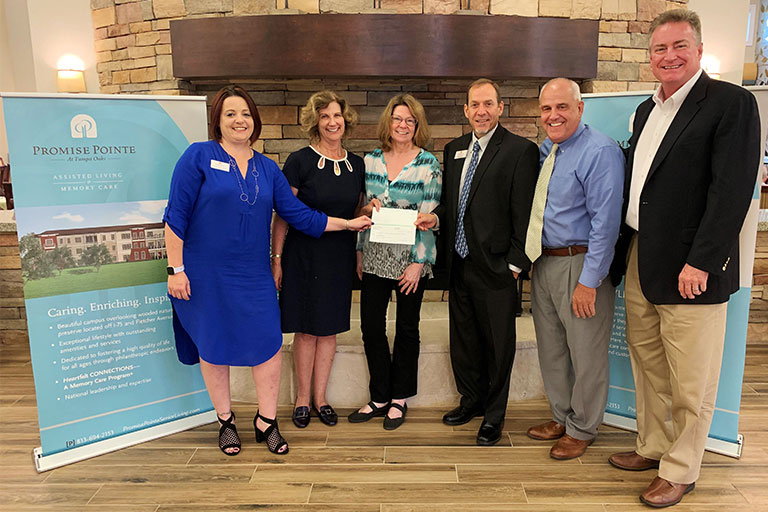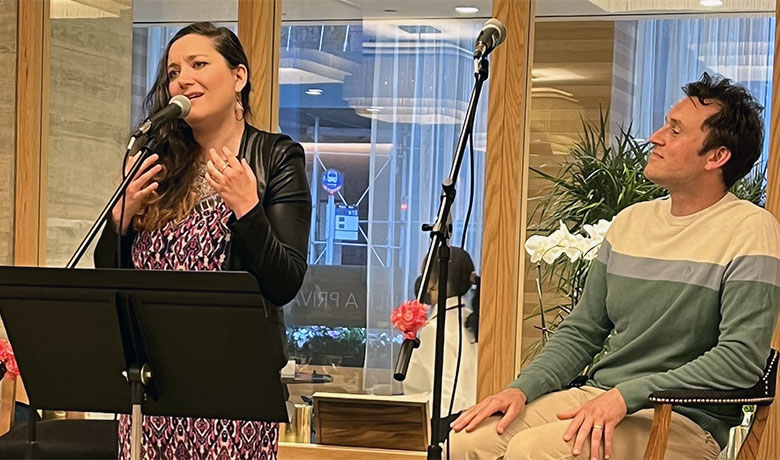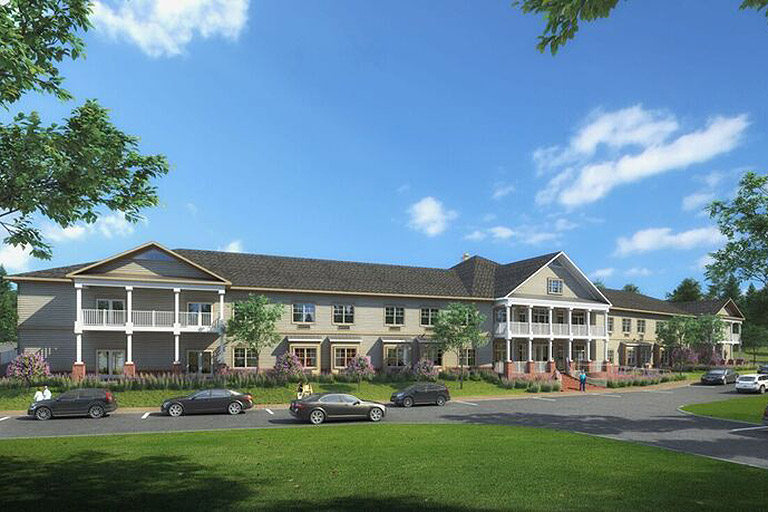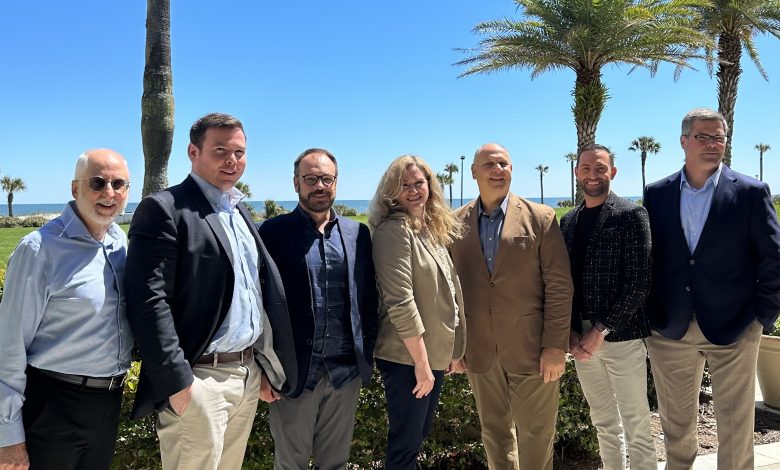
HEALTHTAC East 2024 Panel: The Middle Market
By Jim Nelson | April 15, 2024
AMELIA ISLAND, FL — Senior Living News’ sister company HEALTHTAC recently held an executive retreat at The Ritz-Carlton on this lush island near Jacksonville, Florida. Four panels were hosted at this retreat, covering staffing solutions (recruiting and retention), connecting residents, and the middle market.
The National Investment Center calls them the Forgotten Middle, a dramatic term for middle-income seniors, of which there are expected to be roughly 14.5 million in five years (compared with fewer than 8 million just a decade ago). They have too much money to qualify for assistance, but not enough to afford typical private-pay options. If things continue on their current path, we won’t have enough housing for these “middle-market” seniors.
There are two ways for a company to get into the middle market: buy and renovate an existing community or design and build your own. Anthology Senior Living’s EVP Operations, Erin Caswell, began the fourth panel by explaining Anthology’s approach as it looks at jumping into the middle market.
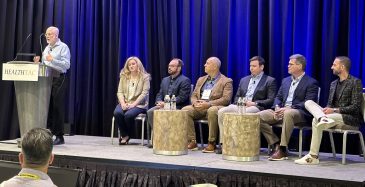
“We’re looking at acquisition,” she said. “We’re looking at some opportunities in markets where we’ve done business in the past and seeing if, with some modifications to that operating model, it’s better suited for a middle market product.”
“All we do is middle market, and we purchase existing properties,” Novellus Living’s CEO Chris Coulter followed. “We won’t seek out newly built or build — it’s not cost effective to stay in the middle market when we do that because of the price-per-unit, price-per-square footage to build.”
“We have to think about the middle market in a completely different way,” countered Joe Jasmon, the managing partner at American Healthcare Management Group, where they founded Elevate Senior Living specifically for the middle market. “You have to build a better mousetrap, you have to rethink senior living from design, from operations, from financial structure, and from relationships within the community. That’s what we believe, and I’ve done it; Clearwater, Florida, is our first one. You’ve got to change your whole mindset around senior living. We’re ground-up all the way.”
“I’ve done both,” said Dennis Murphy, the president at Aviva Senior Living, “but more recently it’s been acquisition for all the reasons; on a cost-per-unit [basis], it’s easier to do. That said, I think that if you build new, you can get efficiencies in the way you design your building so if you can find a way to get the land really cheap, and you can find a way to skinny down the construction costs that make it closer to being able to pencil, but right now we’re mainly focused on acquisition with some renovation work.”
“We currently are going down the path of acquisition,” noted Justin Wray of Jaybird Senior Living. “The challenge that you have with acquisitions is it’s never really two of the same properties, so when you’re looking at your operations you really have to customize it. That’s one of the challenges that we face.”
And what are some of the other impediments to getting into the middle market?
“The biggest problem is taking over an existing building, and the time it takes for us to renovate and then turn the building around, so it actually does make a profit,” Coulter said. “We usually look for buildings that are distressed, because you can buy it for cheaper, but the time it takes to turn is considerable sometimes, and that middle market only has a certain amount that they can play with. So, your pricing tends to be a little bit more fixed in terms of what you can ask. You’ve really got to know what you’re doing when you’re going in.”
“I think it’s really looking at the operating model,” Murphy said. “If you have eight department heads, and you’re going to operate this like a private-pay senior housing, you’re going to have a very hard time. It’s not only getting it at a reasonable cost, but I think if your operating model is the same you will fail. You need to completely relook at what your dining program looks like, what your programming looks like; if you can trim costs in all those other areas, you can meet that middle market price point of $45,000/$50,000 a year, which is really where it needs to be to be able to care for the 14 million Americans that are going to face this situation.”
Henry Quinlan, the president of South Coast Improvement Company, was asked how the design-build model can help operators as they acquire or build middle-market communities.
“Design-build, especially in acquisitions, is beneficial to the owners,” he said. “The most successful design-build projects we’ve had are actually with acquisitions. It allows the operators to get us involved early in pre-construction. We know what their budget is. We contract out with the architects and the engineers with budget in mind, so we make sure that that product doesn’t get over engineered. We keep an eye on budget, we engage in municipality, so we’re running that dual path of being mindful of both time and money. And the goal for all our clients is the day they pass papers they want to start construction. If they start engaging after they actually buy the property, it’s another six to nine months.”
What kind of modifications need to be made to accommodate middle market housing?
“First and foremost,” Jasmon responded, “wasted space. In all the senior living buildings that we built over the past — guilty, as charged — we have giant dining rooms, as a perfect example; we use the dining room, generally, three hours a day and then they’re shuttered up. In our [middle market] model we eliminated all the wasted space: no giant dining rooms, no long hallways.”
Coulter talked about what he has found to be most cost effective.
“We really have to make hard decisions when we take a building,” he said, “because we’re stuck with the footprint, we’re stuck with the operation, how it can work and will work. We have to evaluate each building individually. Most buildings, when you first look at them, can look like they’re completely falling apart; we probably look at 100 buildings and say no to 95 immediately. And the next five you’ve got to go in and take a look [and ask], ‘What is this building going to do for us? How can we do it? How was it built? How old is everything? What can we do in terms of renovations?’ We’re taking over the operation that exists so a lot of times we don’t even know the efficiencies or inefficiencies of the building until you get in for three or four or five or six months, sometimes even a year. The efficiency that keeps our costs down the most is our cost-per-unit basis. That’s the number one economic driver of my company. Can we buy a building that gives us a per-unit-price that allows us to not charge a higher rent, so we don’t have to service the real estate.”
“The biggest thing that I think about is maybe the level of care or the acuity level of the residents that you’re taking,” Caswell jumped in, “and the fact that maybe in a state that requires nurses to pass certain types of medications, those might be residents that you either don’t admit, or you have partnerships with outside providers that possibly use government funds to do that work for you, so that you’re not staffing for that. I do think, as everybody said, you’re going to have to look at the operating model, the dining model, maybe you’re using some type of universal caregiver. But really, it’s the acuity, because I think care is one of the largest drivers of expense when I’m staring at my P&L.”
Modifying existing programs and square footage is one way to save on cost; Quinlan offered another way.
“The best advice I can give to any operator that’s looking for acquisitions,” he offered, “is to invest in pre-construction, engage a construction manager, general contractor, right when you start the due diligence process because you want to know right away, ‘Is this budget going to work? Is it feasible?’”
The panel then talked for a few minutes about whether government assistance is the solution to the middle market challenge.
“We also do work in affordable housing,” Quinlan commented. “When the government gets involved, everything gets drawn out. Where a pre-con of an acquisition could be three to four months, affordable housing is two years.”
“I think the government does have to be a part of the conversation,” said Wray, “It’s not the whole conversation at this point, because right now we utilize Medicaid and elderly waiver in a lot of the states, but you have to be really careful because that margin can switch real quickly if you get them out of whack.”
From the audience, Heritage Communities COO Amy Birkel asked how sales and marketing differ in the middle market.
“One hundred percent different,” replied Jasmon. “The most important component in the middle market from a sales and marketing perspective is to become part of the community. You have to be engaged with the not-for-profits, the churches, the business owners, the local UPS store — all the people that have some sort of a touch or contact with a senior in their lives and get them integrated in the community. Our theory was to then move people in and open the doors rather than move them in and close the doors. That’s where you get your volunteers, job training programs, where you help with your staffing models, and you get extra CNAs and housekeepers and all those types of folks from that standpoint, in the sales and marketing. It’s really a lot of groundwork, almost door to door in the neighborhoods, talking to people, hosting events in the communities in a different way than you would normally do.”
“One of the things that we’ve really focused on, and our continued focus, is to purchase properties in clusters,” Wray concluded. “Instead of having marketing for one building, we can split the cost over four buildings. That’s one of the ways that we’ve been able to narrow down some of those costs.”

